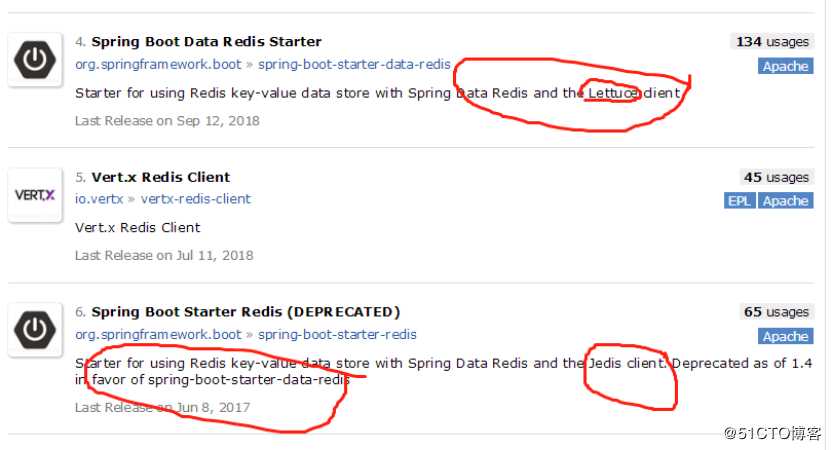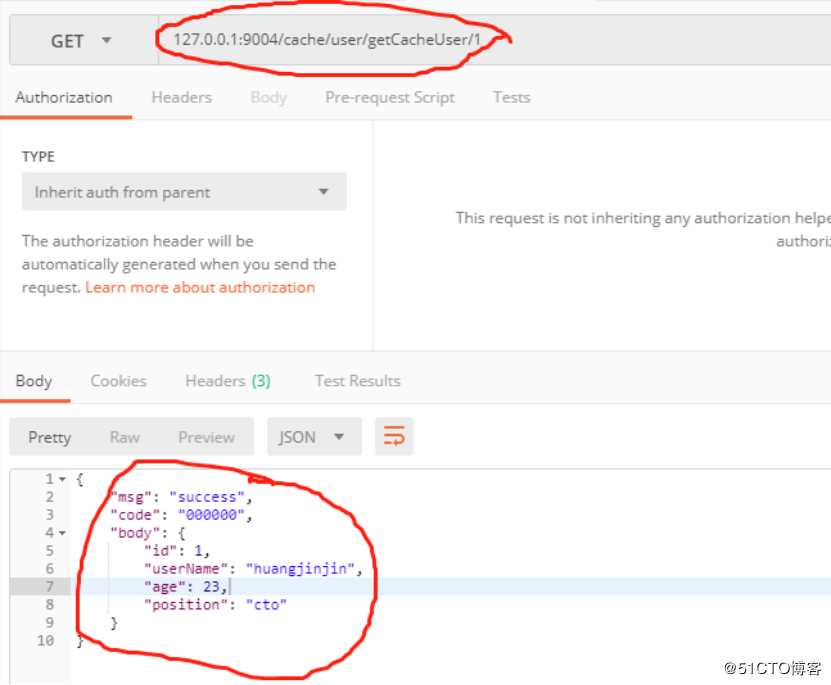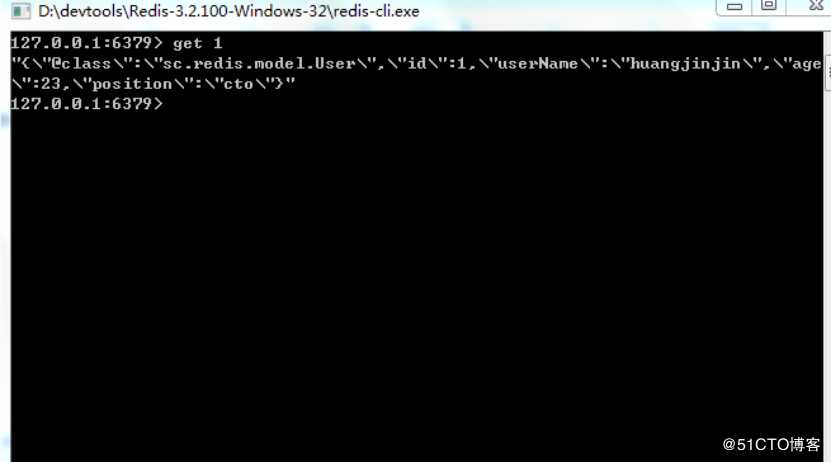标签:active 集合 autowired 图片 release cli 直接 enc autoconf
喜欢关注个人公众号: java乐园Redis是一种nosql数据库,以键值对<key,value>的形式存储数据,其速度相比于MySQL之类的数据库,相当于内存读写与硬盘读写的差别,所以常常用作缓存,用于少写多读的场景下,直接从缓存拿数据比从数据库(数据库要I/O操作)拿要快得多。Redis目前几乎无处不在,大公司小公司都在用。

Spring cloud 2.x版本后默认Redis客户端连接池类型使用的是lettuce,而Sping cloud 1.5.x使用的jedis。Lettuce?和?Jedis?的都是连接Redis Server的客户端程序。Jedis在实现上是直连redis server,多线程环境下非线程安全,除非使用连接池,为每个Jedis实例增加物理连接;Lettuce基于Netty的连接实例(StatefulRedisConnection),可以在多个线程间并发访问,且线程安全,满足多线程环境下的并发访问,同时它是可伸缩的设计,一个连接实例不够的情况也可以按需增加连接实例。
1、新建项目sc-redis,对应的pom.xml文件如下
<project xmlns="http://maven.apache.org/POM/4.0.0" xmlns:xsi="http://www.w3.org/2001/XMLSchema-instance"
xsi:schemaLocation="http://maven.apache.org/POM/4.0.0 http://maven.apache.org/xsd/maven-4.0.0.xsd">
<modelVersion>4.0.0</modelVersion>
<groupId>spring-cloud</groupId>
<artifactId>sc-redis</artifactId>
<version>0.0.1-SNAPSHOT</version>
<packaging>jar</packaging>
<name>sc-redis</name>
<url>http://maven.apache.org</url>
<parent>
<groupId>org.springframework.boot</groupId>
<artifactId>spring-boot-starter-parent</artifactId>
<version>2.0.4.RELEASE</version>
</parent>
<dependencyManagement>
<dependencies>
<dependency>
<groupId>org.springframework.cloud</groupId>
<artifactId>spring-cloud-dependencies</artifactId>
<version>Finchley.RELEASE</version>
<type>pom</type>
<scope>import</scope>
</dependency>
</dependencies>
</dependencyManagement>
<properties>
<project.build.sourceEncoding>UTF-8</project.build.sourceEncoding>
<maven.compiler.source>1.8</maven.compiler.source>
<maven.compiler.target>1.8</maven.compiler.target>
</properties>
<dependencies>
<dependency>
<groupId>org.springframework.boot</groupId>
<artifactId>spring-boot-starter-data-redis</artifactId>
</dependency>
<dependency>
<groupId>org.apache.commons</groupId>
<artifactId>commons-pool2</artifactId>
</dependency>
<dependency>
<groupId>org.springframework.boot</groupId>
<artifactId>spring-boot-starter-web</artifactId>
</dependency>
</dependencies>
</project>
2、新建spring boot启动类
package sc.redis;
import org.springframework.boot.SpringApplication;
import org.springframework.boot.autoconfigure.SpringBootApplication;
@SpringBootApplication
public class RedisApplication {
public static void main(String[] args) {
SpringApplication.run(RedisApplication.class, args);
}
}3、新建配置文件application.yml
server:
port: 9004
spring:
application:
name: sc-redis
redis:
host: 127.0.0.1
password:
port: 6379
timeout: 10000 # 连接超时时间(毫秒)
database: 0 # Redis默认情况下有16个分片,这里配置具体使用的分片,默认是0
lettuce:
pool:
max-active: 8 # 连接池最大连接数(使用负值表示没有限制) 默认 8
max-wait: -1 # 连接池最大阻塞等待时间(使用负值表示没有限制) 默认 -1
max-idle: 8 # 连接池中的最大空闲连接 默认 8
min-idle: 0 # 连接池中的最小空闲连接 默认 0备注:reids对用的所有配置项可以在以下类查看
org.springframework.boot.autoconfigure.data.redis.RedisProperties
4、自定义Reids的Template
默认情况下的模板只能支持RedisTemplate<String, String>,也就是只能存入字符串,这在开发中是不友好的,所以自定义模板是很有必要的,当自定义了模板又想使用String存储这时候就可以使用StringRedisTemplate的方式,它们之间并不冲突。
package sc.redis.config;
import java.io.Serializable;
import org.springframework.boot.autoconfigure.AutoConfigureAfter;
import org.springframework.boot.autoconfigure.data.redis.RedisAutoConfiguration;
import org.springframework.context.annotation.Bean;
import org.springframework.context.annotation.Configuration;
import org.springframework.data.redis.connection.lettuce.LettuceConnectionFactory;
import org.springframework.data.redis.core.RedisTemplate;
import org.springframework.data.redis.serializer.GenericJackson2JsonRedisSerializer;
import org.springframework.data.redis.serializer.StringRedisSerializer;
@Configurationbr/>@AutoConfigureAfter(RedisAutoConfiguration.class)
public class RedisCacheAutoConfiguration {
@Bean
public RedisTemplate<String, Serializable> redisCacheTemplate(LettuceConnectionFactory redisConnectionFactory) {
RedisTemplate<String, Serializable> template = new RedisTemplate<>();
//键的序列化方式
template.setKeySerializer(new StringRedisSerializer());
//值的序列化方式
template.setValueSerializer(new GenericJackson2JsonRedisSerializer());
template.setConnectionFactory(redisConnectionFactory);
return template;
}}
5、新建一个模拟的Controller类
package sc.redis.config;
import java.io.Serializable;
import java.util.HashMap;
import java.util.Map;
import org.springframework.beans.factory.annotation.Autowired;
import org.springframework.data.redis.core.RedisTemplate;
import org.springframework.web.bind.annotation.GetMapping;
import org.springframework.web.bind.annotation.PathVariable;
import org.springframework.web.bind.annotation.ResponseBody;
import org.springframework.web.bind.annotation.RestController;
import sc.redis.model.User;
@RestController
public class UserCacheController {
//@Autowired
//private StringRedisTemplate stringRedisTemplate;
@Autowired
private RedisTemplate<String, Serializable> redisCacheTemplate;
@GetMapping(value = "/cache/user/cacheUser")
@ResponseBody
public Map<String, Object> cacheUser() {
Map<String, Object> result = new HashMap<String, Object>();
result.put("code", "000000");
result.put("msg", "success");
User u = new User();
u.setId(1L);
u.setAge(23);
u.setUserName("huangjinjin");
u.setPosition("cto");
result.put("body", u);
redisCacheTemplate.opsForValue().set(String.valueOf(u.getId()), u);
return result;
}
/**
* 获取缓存信息
* @param id
* @return
*/
@GetMapping(value = "/cache/user/getCacheUser/{id}")
@ResponseBody
public Map<String, Object> getCacheUser(@PathVariable Long id) {
Map<String, Object> result = new HashMap<String, Object>();
result.put("code", "000000");
result.put("msg", "success");
User u = (User) redisCacheTemplate.opsForValue().get(String.valueOf(1));
System.out.println(u.getUserName());
result.put("body", u);
return result;
}}
6、启动sc-redis项目,并验证是否启动成功
7、使用postman访问接口
(1)存储值到redis
http://127.0.0.1:9004/cache/user/cacheUser
(2)从redis获取存贮的值
http://127.0.0.1:9004/cache/user/getCacheUser/1
使用redis客户端redis-cli查看是否把相关数据存贮到redis

下列的就是Redis其它类型所对应的操作方式:
opsForValue: 对应 String(字符串)
opsForZSet: 对应 ZSet(有序集合)
opsForHash: 对应 Hash(哈希)
opsForList: 对应 List(列表)
opsForSet: 对应 Set(集合)
opsForGeo: 对应 GEO(地理位置)
17、springcloud整合lettuce使用redis
标签:active 集合 autowired 图片 release cli 直接 enc autoconf
原文地址:https://blog.51cto.com/13538361/2492001